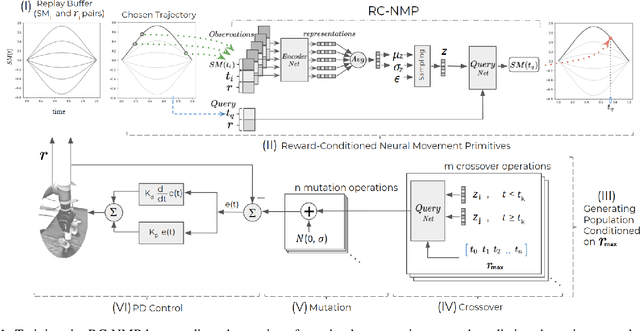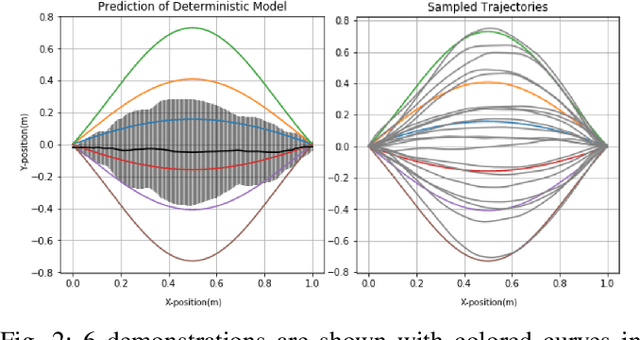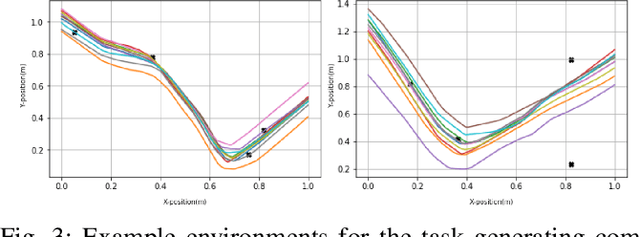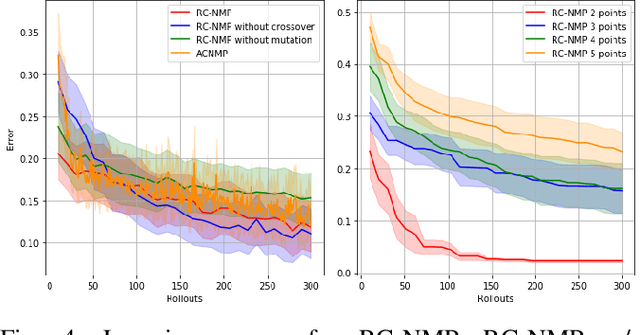Utku Bozdogan
Multi-step planning with learned effects of action executions
Mar 16, 2023Abstract:In this paper, we propose an affordance model, which is built on Conditional Neural Processes, that can predict effect trajectories given objects, action or effect information at any time. Affordances are represented in a latent representation that combines object, action and effect channels. This model allows us to make predictions of intermediate effects expected to be obtained from partial action executions, and this capability is used to make multi-step plans that include partial actions in order to achieve goals. We first show that our model can make accurate continuous effect predictions. We compared our model with a recent LSTM-based effect predictor using an existing dataset that includes lever-up actions. Next, we showed that our model can generate accurate effect predictions for push and grasp actions. Finally, we showed that our system can generate successful multi-step plans in order to bring objects to desired positions. Importantly, the proposed system generated more accurate and effective plans with partial action executions compared to plans that only consider full action executions. Although continuous effect prediction and multi-step planning based on learning affordances have been studied in the literature, continuous affordance and effect predictions have not been utilized in making accurate and fine-grained plans.
Reward Conditioned Neural Movement Primitives for Population Based Variational Policy Optimization
Nov 09, 2020



Abstract:The aim of this paper is to study the reward based policy exploration problem in a supervised learning approach and enable robots to form complex movement trajectories in challenging reward settings and search spaces. For this, the experience of the robot, which can be bootstrapped from demonstrated trajectories, is used to train a novel Neural Processes-based deep network that samples from its latent space and generates the required trajectories given desired rewards. Our framework can generate progressively improved trajectories by sampling them from high reward landscapes, increasing the reward gradually. Variational inference is used to create a stochastic latent space to sample varying trajectories in generating population of trajectories given target rewards. We benefit from Evolutionary Strategies and propose a novel crossover operation, which is applied in the self-organized latent space of the individual policies, allowing blending of the individuals that might address different factors in the reward function. Using a number of tasks that require sequential reaching to multiple points or passing through gaps between objects, we showed that our method provides stable learning progress and significant sample efficiency compared to a number of state-of-the-art robotic reinforcement learning methods. Finally, we show the real-world suitability of our method through real robot execution involving obstacle avoidance.
 Add to Chrome
Add to Chrome Add to Firefox
Add to Firefox Add to Edge
Add to Edge